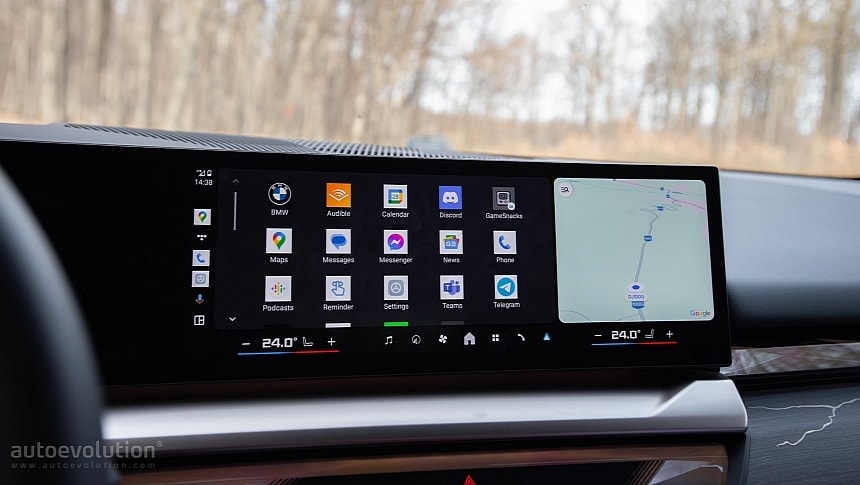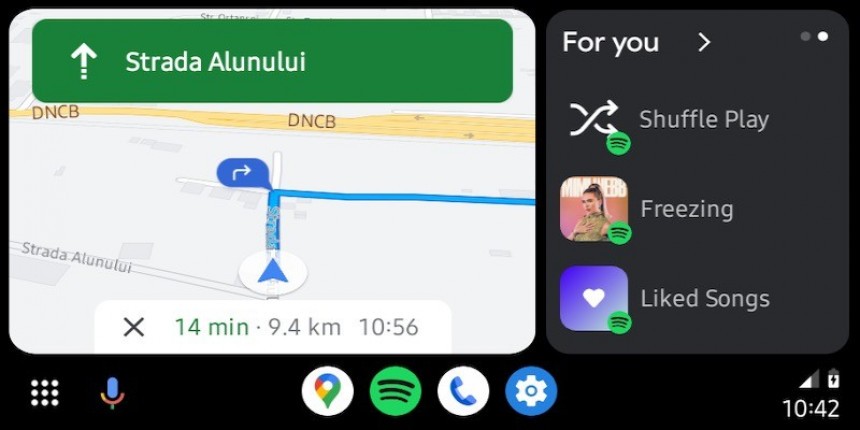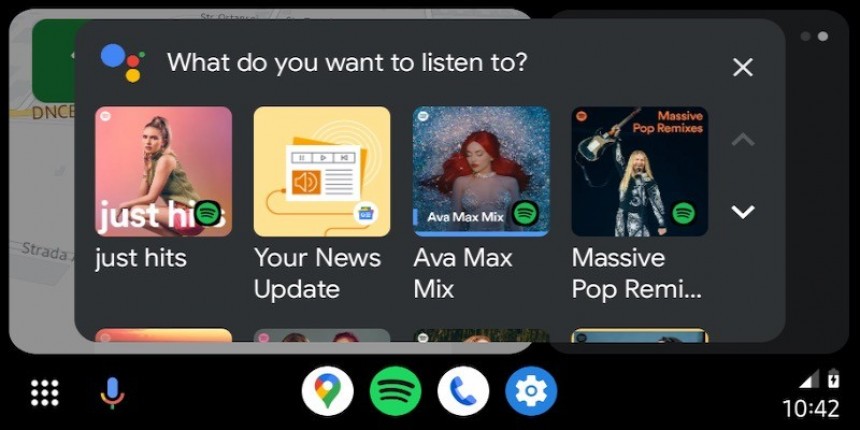Google Maps feels at home on Android Auto, as it's a Google app running on top of another Google app, so it's no surprise that most users rely on it for navigation.
However, Google Maps isn't everybody's cup of tea. Android Auto also comes with a wide selection of other navigation apps, including Waze, another Google-owned solution whose main selling point is the crowdsourced traffic data.
A recent server-side change enforced by Google seems to cause confusion in the Android Auto world. It's unclear if this is intended behavior or just a bug, but I asked around and couldn't get a clear reason.
Here's specifically what happens.
The Google Assistant integration in Android Auto has a simple yet essential purpose: it allows users to control the experience with voice commands.
An app like Android Auto shouldn't cause driver distraction, so Google Assistant allows users to interact with their apps without looking at the screen. The voice commands are critical and enable users to configure navigation, set a new destination, play music, make phone calls, and send messages.
The default Android Auto behavior for navigation apps allows users to instruct Google Assistant to set a new destination in any software running on the screen. If they run Google Maps, telling Android Auto to set the destination to a new address reconfigures navigation in Google Maps. If they run Waze, the same thing happens in Waze.
Starting this week, Android Auto will process the request but switch the application to Google Maps. Google Assistant receives the voice command, but instead of running it in the application on the screen, it launches Google Maps and configures the destination to the spoken address.
Unsurprisingly, users believe this is a way to enforce Google Maps, as switching from a different app to Google Maps for every request prevents them from sticking with another navigation app.
I first reported this behavior earlier this week when Google started the Android Auto 11.7 rollout, but it now seems that the search giant enabled the same experience in other versions, too. The change might be powered by a server-side update in the Google app, which powers the Google Assistant capabilities on Android Auto.
Users explain that instructing Google Assistant to set up a new destination in a different app always ends up with Android Auto launching Google Maps, but everything else works as expected. If they use touch input to configure navigation in Waze, the experience works correctly, and Google Maps doesn't load.
With Google remaining tight-lipped on this odd change, many users turn to the extreme workaround: disabling Google Maps on their mobile devices.
The typical workarounds in the Android Auto world don't improve the experience. Clearing the cache and data, changing cables, and other generic solutions don't resolve the bug. It's unclear if downgrading the Google App to a previous build brings things back to normal.
Nothing works, so users decided to disable Google Maps on their devices to prevent Google Assistant from switching to its interface when instructed to set navigation in another app. However, even disabling Google Maps with the sole purpose of addressing this shortcoming produces mixed results.
While some users claim that everything is back to normal after disabling Google Maps, others explain that their navigation apps fail to load or configure navigation because they rely on Google Maps data. In some cases, Google Assistant can't process the request, confirming the voice command but not setting up the destination to the requested address.
Some users claim they disabled Google Assistant on their mobile devices, with the assistant working correctly when the phone is connected to the vehicle to run Android Auto. It's another sign that Google Assistant is the one to blame for this problem.
Google has remained tight-lipped on the change, so many hope it's only a bug that the company will eventually resolve. If the problem resides in the Google app, we should get a fix in the coming days, as Google typically releases such app updates regularly. If the glitch is in Android Auto, we must wait for a new release, though all signs indicate this isn't the case. The server-side rollout and the new behavior appearing in more than a single Android Auto version indicate that an app update isn't the culprit for enabling this controversial behavior.
Meanwhile, disabling Google Maps is the only solution if you don't want to use the app on Android Auto. The other solution is to rely on touch input in your navigation app, as Google enforces Google Maps only with voice commands.
Let me know if you don't see this change on Android Auto, especially if you have already updated to version 11.7. I contacted Google for some context on this change but haven't heard back, so I need more information from users to be able to determine precisely what happens and how the issue can be fixed.
A recent server-side change enforced by Google seems to cause confusion in the Android Auto world. It's unclear if this is intended behavior or just a bug, but I asked around and couldn't get a clear reason.
Here's specifically what happens.
An app like Android Auto shouldn't cause driver distraction, so Google Assistant allows users to interact with their apps without looking at the screen. The voice commands are critical and enable users to configure navigation, set a new destination, play music, make phone calls, and send messages.
The default Android Auto behavior for navigation apps allows users to instruct Google Assistant to set a new destination in any software running on the screen. If they run Google Maps, telling Android Auto to set the destination to a new address reconfigures navigation in Google Maps. If they run Waze, the same thing happens in Waze.
Starting this week, Android Auto will process the request but switch the application to Google Maps. Google Assistant receives the voice command, but instead of running it in the application on the screen, it launches Google Maps and configures the destination to the spoken address.
Unsurprisingly, users believe this is a way to enforce Google Maps, as switching from a different app to Google Maps for every request prevents them from sticking with another navigation app.
Users explain that instructing Google Assistant to set up a new destination in a different app always ends up with Android Auto launching Google Maps, but everything else works as expected. If they use touch input to configure navigation in Waze, the experience works correctly, and Google Maps doesn't load.
With Google remaining tight-lipped on this odd change, many users turn to the extreme workaround: disabling Google Maps on their mobile devices.
The typical workarounds in the Android Auto world don't improve the experience. Clearing the cache and data, changing cables, and other generic solutions don't resolve the bug. It's unclear if downgrading the Google App to a previous build brings things back to normal.
Nothing works, so users decided to disable Google Maps on their devices to prevent Google Assistant from switching to its interface when instructed to set navigation in another app. However, even disabling Google Maps with the sole purpose of addressing this shortcoming produces mixed results.
While some users claim that everything is back to normal after disabling Google Maps, others explain that their navigation apps fail to load or configure navigation because they rely on Google Maps data. In some cases, Google Assistant can't process the request, confirming the voice command but not setting up the destination to the requested address.
Google has remained tight-lipped on the change, so many hope it's only a bug that the company will eventually resolve. If the problem resides in the Google app, we should get a fix in the coming days, as Google typically releases such app updates regularly. If the glitch is in Android Auto, we must wait for a new release, though all signs indicate this isn't the case. The server-side rollout and the new behavior appearing in more than a single Android Auto version indicate that an app update isn't the culprit for enabling this controversial behavior.
Meanwhile, disabling Google Maps is the only solution if you don't want to use the app on Android Auto. The other solution is to rely on touch input in your navigation app, as Google enforces Google Maps only with voice commands.
Let me know if you don't see this change on Android Auto, especially if you have already updated to version 11.7. I contacted Google for some context on this change but haven't heard back, so I need more information from users to be able to determine precisely what happens and how the issue can be fixed.


















